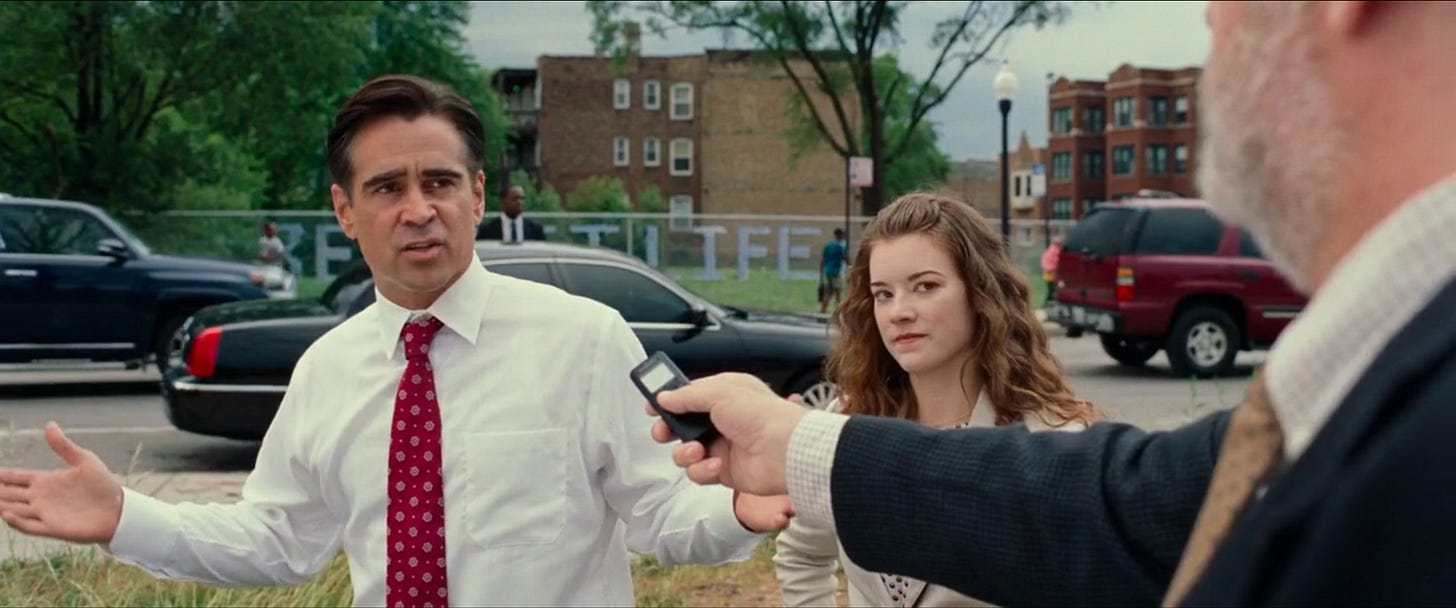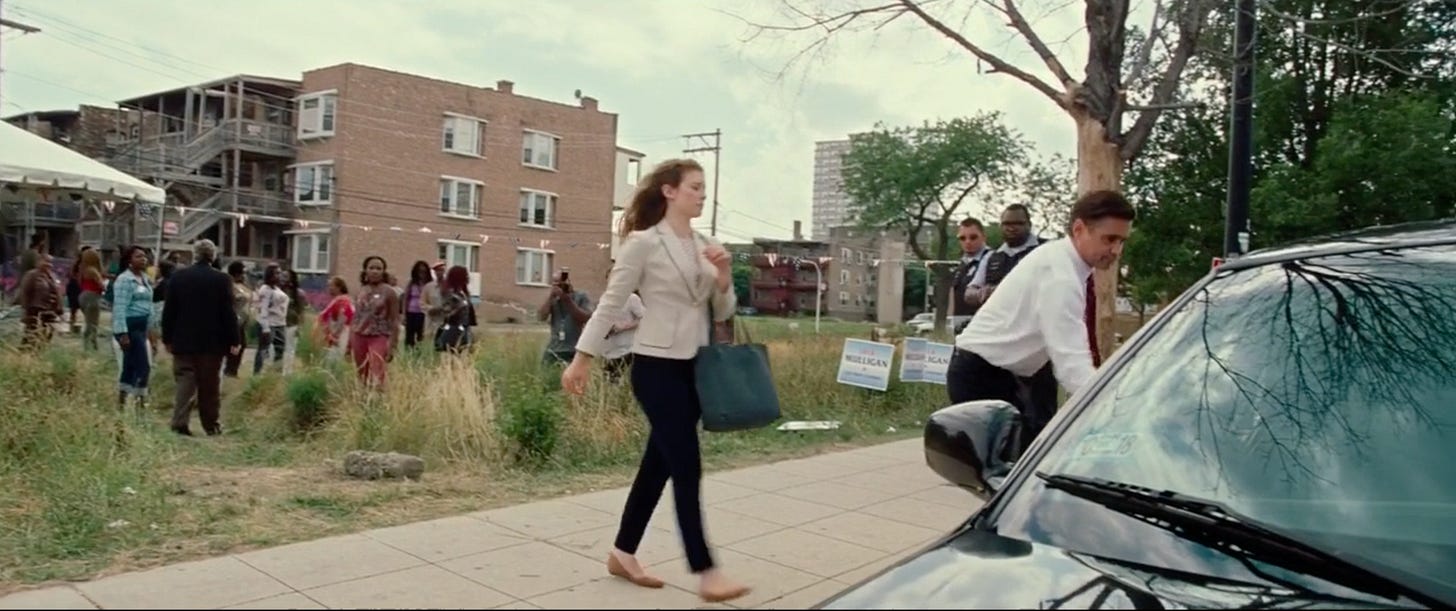This over-two-minute oner in Widows is divisive: people love it, people hate it, they think it’s too pretentious; they think it’s too simple.
Let’s look at the practicalities of shooting, the directional movement, what it doesn’t show us and why, what it does show us and why.
Practicalities
The shot immediately prior is of Jack Mulligan (Colin Farrell) talking to the press after a campaign event, with his car in the background.
As this oner starts, the camera is mounted on the car already. The movement before the camera ‘settles in’ continues Jack’s motion, transitioning him into the car but also smoothing the change from practiced political manoeuvring to personal, blunt conversation with his assistant Siobhan (Molly Kunz).
Jack and Siobhan get in and the car takes off; surely the actors would have run their lines throughout the drive, but the nature of the shot means you can chop different takes, shorten or lengthen pauses, etc., so the conversation perfectly fills the time.
The camera move in the middle of the shot as the camera travels over the hood is likely remote controlled; presumably from an operator in the car driving in front.
An operator could ride a rig mounted on the front of the car [if you have any BTS or worked on this shot, hit us up!], and any windscreen reflections replaced later. Because of the difficulty factor, duration, and the fact it’d be easier for a stunt driver to essentially ‘follow car’ without an operator in the way, someone operating from a car leading the way is my best guess.
The only real change in the oner comes from this movement; the camera right instead of left. But that’s key.
The Movement
Camera movement and actor entry/exit are two of many ways this shot screams about transition and change, both switching in the mere two minutes it takes to drive from campaign spot to Jack’s house.
They’re also the two simplest aspects of a shot which involves plenty of expense, permits, closed roads, and crew members scrambling behind the scenes.
The camera moves and swivels a few inches, starting focused on one side and ending pointing at the other. Jack and Siobhan enter one side of the car and exit the other.
Easy peasy.
What We Don’t See
We don’t see Jack and Siobhan.
This isn’t merely for convenient, practical reasons as noted above. It’s because we can’t — and aren’t meant to — gauge their faces during their unguarded chat. We, like the public, only see Jack when he’s putting on a front. We never see him in private, with his guard down.
Jack puts walls of black glass and politics between himself and everyone, and this includes the audience. How much does Siobhan take his commentary about dicks as a joke? How much weight does he actually give to her insistence he ‘man up?’ We will never know, because he doesn’t want us to.
Note they don’t treat the driver as ‘a person,’ but an inanimate listening object. It’s in the same basket as the way Jack waves to cops/security as he leaves the campaign event, and says ‘fellas’ to the maintenance workers at his mansion. The most he thinks of the people who actually make his life run are to give them politically necessary pleasantries.
What We Do See
We see landscape change from empty lots to construction cones to giant walled-off yards and fancy sconces. We see Jack’s own ivy-dripping home a few blocks from the funding-starved projects. We see neighbourhood kids hanging around at the start to empty manicured sidewalks at the end.
We see the change before our eyes, and viscerally feel how short the trip is, and how impassable it must feel to anyone not born in Jack’s shoes.
Takeaways
All this is not just enabled, but forced to be noticed, by keeping the camera outside the car and playing it in one shot.
It may be simple, but it’s showing a world of complexity.






